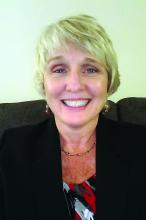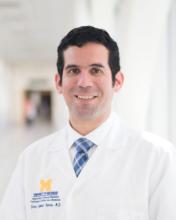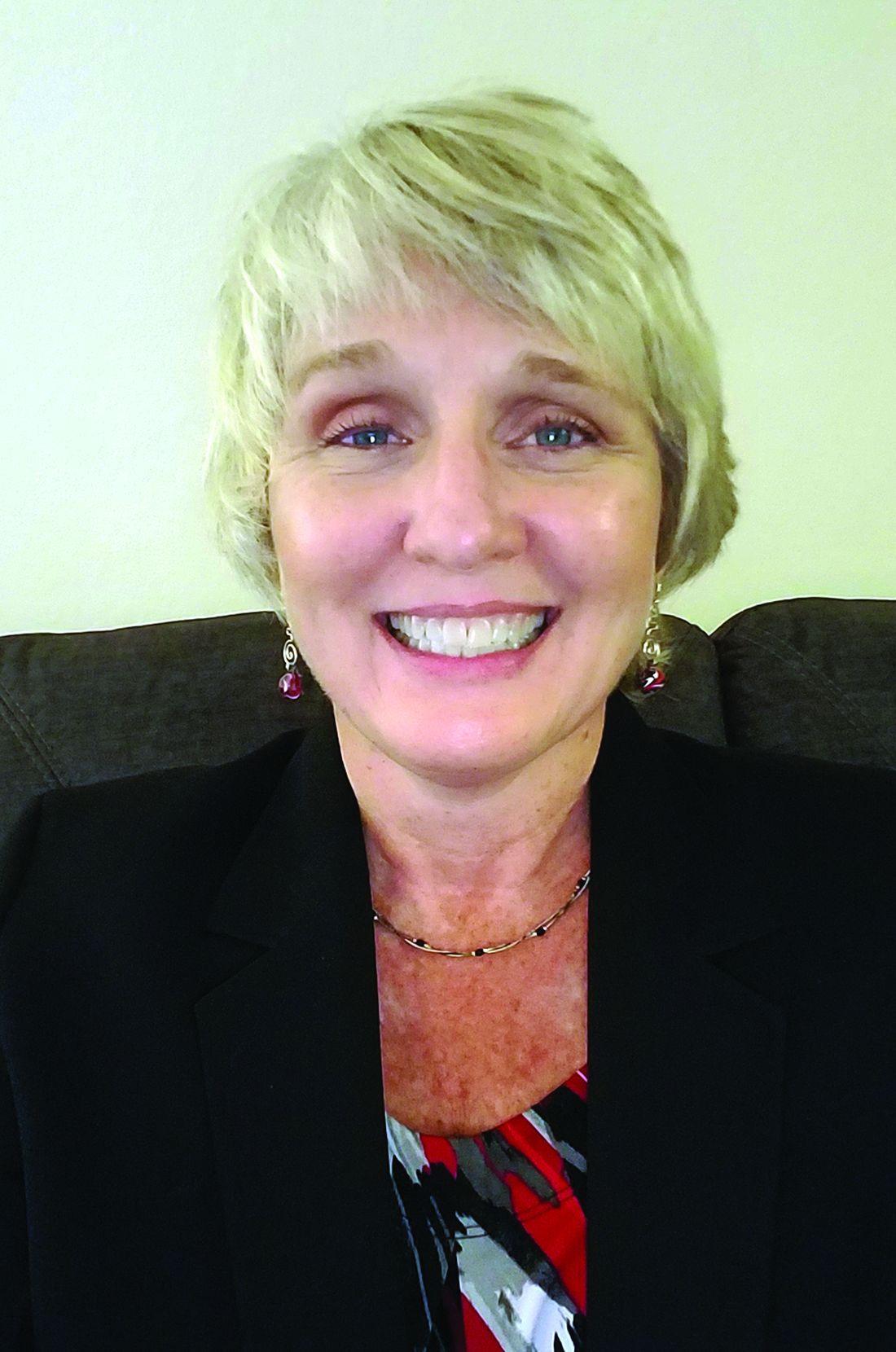User login
Palliative and end-of-life care
Communicating serious news over video
Critical care consultation using telemedicine is increasingly prevalent. Having serious conversations regarding end-of life care over video can be extremely challenging. Here are some suggestions and sample phrases to make palliative-focused conversations more successful
Prior to initiating the conversation, communicate with the bedside team. Ensure they want you to discuss palliative options and make an outline of discussion topics together. Identify and include all important decision-makers. Family may need to be connected over a digital meeting platform such as Zoom© or WEBex© and arrange for interpreter services if needed.
Prepare the virtual meeting place ahead of time. Test the connection, and make sure the audiovisual quality is clear. Have the camera centrally positioned, and ensure adequate lighting to easily see facial expressions. Remove distracting background furniture, and clear your space of confidential material. Have a quiet area planned to avoid interruptions (J Gen Intern Med. 2020 Oct 27:1-4. doi: 10.1007/s11606-020-06278-z. Online ahead of print).
Open the conversation with introductions, and explore perceptions with open-ended questions: “So I know where to begin, tell me about your understanding of what has been happening?” Get a sense of the patient’s previous function, quality of life, and their values as an individual. Maintain good eye contact throughout. When ready to give an update, use simple language and avoid details: “Unfortunately, your condition is worse. You have not been responding to treatments as hoped. Your lungs are needing much more support, and I’m worried they are not going to get better.”Anticipate emotions, and provide empathetic responses: “I wish we had better news. This must be overwhelming for you” (Back, et al. Ann Int Med. 2020;172[11]:759). Finally, offer a recommendation. Most patients and families are interested in your advice and want guidance. Use the patient’s previously stated values to support your recommendation.
Andrew Badke, MD
Steering Committee Member
Respiratory care
COVID-19 pandemic bringing protocols to the forefront
COVID-19 has health care organizations threatened like never before. Staffing requirements, equipment necessities, and personnel training happen in a whirlwind.1 Information could change daily/hourly, and the need to protocolize guidelines became more evident each day.
While protocols have existed long before COVID-19, many institutions and organizations responded to the ever-changing pandemic by creating clinical practice guidelines (CPGs) to help not only their experienced staff members but also the non-traditional ICU caregivers thrust onto the front lines.3 Organizations worked on PPE protocols, respiratory care management, and ECMO guidelines to name a few.2,3 Protocols with algorithms and CPGs have been shown to reduce patient harm and improve standardization and communication.
A CPG is a general principle that guides the management of care, in which specific questions are posed, a literature review is completed, and the quality of the research evaluated. The questions are answered using the strength of the available research. CPG decision points are then based on the evidence or on the consensus of experts, resulting in a protocol that are descriptions of detailed behaviors to be followed in specific situations. These behaviors are provided in a list format or a flow diagram. Using a universal language for protocols with algorithms has aided many hospitals ensure effective care for patients and has even helped develop multidisciplinary relationships not present prior to the pandemic (onepagericu.com).
DeDe Gardner, RRT, DrPh, FCCP
Donna Tanner, RRT-ACCS, MBA, FCCP
Steering Committee Members
1. epub JAMA 2/2021.
2. WHO, Guidelines 1/2021.
3. CHEST, Clinical Resources.
4. Curr Treat Options Ped 2015,1:347
Sleep medicine
Time to move the dial: Sleep and burnout in health care workers during the COVID-19 pandemic
Although the interaction between sleep, mood disorders, and burnout is well established, many of us are still sleep-deprived. A cross-sectional study of over 800 health care workers during the pandemic stay-at-home orders in March 2020 reported that those working in-person had shorter sleep times and worse mood, while those with longer sleep times had improved mood (Conroy DA, et al. J Clin Sleep Med. 2021;17[2]:185). Even prior to COVID-19, many trainees were facing issues with sleep deprivation and burnout (Sharp M, et al. Chest. 2021;159[2]:733).
One year into the pandemic, we continue to face a unique set of hardships, exacerbating underlying sleep disorders such as insomnia, feelings of burnout, and mental health problems. An international team led by Dr. Joel Goh calculated the cost of burnout and its economic impact on the nation’s health care system and estimated this at $4.6 billion per year (Han S, et al. Ann Intern Med. 2019;170[11]:784). National medical organizations, including the National Academy of Medicine and the American Medical Association, have also placed greater emphasis on clinician well-being and resilience. Practical frameworks for creating wellness during the pandemic exist; however. senior-level executive champions are critical for implementation (Adibe B, et al. N Engl J Med Catalyst. Jun 2020). While the long-term impact remains unknown, the current state of sleep and mental health problems and the cost of burnout should be a warning to health systems and institutions to implement remedial interventions now.(“Taking action against burnout: A systems approach to professional well-being,” National Academies of Sciences, Engineering, and Medicine, October 2019.
Nancy H. Stewart, DO, MS, Steering Committee Member
Thoracic oncology
Impact of COVID-19 on lung cancer screening
Lung cancer is the leading cause of cancer-related death worldwide and COVID-19 is making this worse. Prior to the COVID-19 pandemic, despite evidence of improved mortality, the uptake of lung cancer screening (LCS) was quite low with only 4% of those eligible having undergone screening in 2015 (Jemal A, et al. JAMA Oncol. 2017;3[9]:1278).
As the COVID-19 pandemic unfolded, health care resources were re-allocated to critically ill patients and areas, and nonurgent care was postponed. Therefore, LCS programs were halted (Mazzone PJ, et al. Chest. 2020;158[1]:406). This led to concerns that fewer patients would undergo screening and more patients would experience delays in cancer diagnosis.
Using population-based modeling, researchers in England estimated the COVID-19 pandemic will result in decreased lung cancer survival and a subsequent increase in avoidable cancer deaths (Maringe C, et al. Lancet Oncol. 2020;21[8]:1023). And in fact, investigators in Spain found fewer new lung cancer diagnoses during the COVID-19 pandemic compared with the same time-period pre-pandemic, and those that were diagnosed were later stage disease (Reyes R, et al. IASCL World Conference. 2020. A3700).
As we learn more about COVID-19 and communities become vaccinated, it becomes critical to both resume LCS programs and improve participation. While the pandemic has hampered efforts to screening patients, it has also facilitated the uptake of new technologies such as telemedicine. In March 2020, due to the COVID-19 pandemic, the Centers for Medicare and Medicaid Services relaxed the rules for telehealth, and now covers shared decisions making (SDM) virtual visits for LCS (Centers for Medicare & Medicaid Services, “Telehealth Services.” ICN MLN901705, March 2020). This new tool, amongst others, could increase access to LCS, facilitate more widespread adoption of screening, and ultimately improve lung cancer outcomes.
Max Wayne, MD, and Jose Cardenas-Garcia, MD
Steering Committee Members
Palliative and end-of-life care
Communicating serious news over video
Critical care consultation using telemedicine is increasingly prevalent. Having serious conversations regarding end-of life care over video can be extremely challenging. Here are some suggestions and sample phrases to make palliative-focused conversations more successful
Prior to initiating the conversation, communicate with the bedside team. Ensure they want you to discuss palliative options and make an outline of discussion topics together. Identify and include all important decision-makers. Family may need to be connected over a digital meeting platform such as Zoom© or WEBex© and arrange for interpreter services if needed.
Prepare the virtual meeting place ahead of time. Test the connection, and make sure the audiovisual quality is clear. Have the camera centrally positioned, and ensure adequate lighting to easily see facial expressions. Remove distracting background furniture, and clear your space of confidential material. Have a quiet area planned to avoid interruptions (J Gen Intern Med. 2020 Oct 27:1-4. doi: 10.1007/s11606-020-06278-z. Online ahead of print).
Open the conversation with introductions, and explore perceptions with open-ended questions: “So I know where to begin, tell me about your understanding of what has been happening?” Get a sense of the patient’s previous function, quality of life, and their values as an individual. Maintain good eye contact throughout. When ready to give an update, use simple language and avoid details: “Unfortunately, your condition is worse. You have not been responding to treatments as hoped. Your lungs are needing much more support, and I’m worried they are not going to get better.”Anticipate emotions, and provide empathetic responses: “I wish we had better news. This must be overwhelming for you” (Back, et al. Ann Int Med. 2020;172[11]:759). Finally, offer a recommendation. Most patients and families are interested in your advice and want guidance. Use the patient’s previously stated values to support your recommendation.
Andrew Badke, MD
Steering Committee Member
Respiratory care
COVID-19 pandemic bringing protocols to the forefront
COVID-19 has health care organizations threatened like never before. Staffing requirements, equipment necessities, and personnel training happen in a whirlwind.1 Information could change daily/hourly, and the need to protocolize guidelines became more evident each day.
While protocols have existed long before COVID-19, many institutions and organizations responded to the ever-changing pandemic by creating clinical practice guidelines (CPGs) to help not only their experienced staff members but also the non-traditional ICU caregivers thrust onto the front lines.3 Organizations worked on PPE protocols, respiratory care management, and ECMO guidelines to name a few.2,3 Protocols with algorithms and CPGs have been shown to reduce patient harm and improve standardization and communication.
A CPG is a general principle that guides the management of care, in which specific questions are posed, a literature review is completed, and the quality of the research evaluated. The questions are answered using the strength of the available research. CPG decision points are then based on the evidence or on the consensus of experts, resulting in a protocol that are descriptions of detailed behaviors to be followed in specific situations. These behaviors are provided in a list format or a flow diagram. Using a universal language for protocols with algorithms has aided many hospitals ensure effective care for patients and has even helped develop multidisciplinary relationships not present prior to the pandemic (onepagericu.com).
DeDe Gardner, RRT, DrPh, FCCP
Donna Tanner, RRT-ACCS, MBA, FCCP
Steering Committee Members
1. epub JAMA 2/2021.
2. WHO, Guidelines 1/2021.
3. CHEST, Clinical Resources.
4. Curr Treat Options Ped 2015,1:347
Sleep medicine
Time to move the dial: Sleep and burnout in health care workers during the COVID-19 pandemic
Although the interaction between sleep, mood disorders, and burnout is well established, many of us are still sleep-deprived. A cross-sectional study of over 800 health care workers during the pandemic stay-at-home orders in March 2020 reported that those working in-person had shorter sleep times and worse mood, while those with longer sleep times had improved mood (Conroy DA, et al. J Clin Sleep Med. 2021;17[2]:185). Even prior to COVID-19, many trainees were facing issues with sleep deprivation and burnout (Sharp M, et al. Chest. 2021;159[2]:733).
One year into the pandemic, we continue to face a unique set of hardships, exacerbating underlying sleep disorders such as insomnia, feelings of burnout, and mental health problems. An international team led by Dr. Joel Goh calculated the cost of burnout and its economic impact on the nation’s health care system and estimated this at $4.6 billion per year (Han S, et al. Ann Intern Med. 2019;170[11]:784). National medical organizations, including the National Academy of Medicine and the American Medical Association, have also placed greater emphasis on clinician well-being and resilience. Practical frameworks for creating wellness during the pandemic exist; however. senior-level executive champions are critical for implementation (Adibe B, et al. N Engl J Med Catalyst. Jun 2020). While the long-term impact remains unknown, the current state of sleep and mental health problems and the cost of burnout should be a warning to health systems and institutions to implement remedial interventions now.(“Taking action against burnout: A systems approach to professional well-being,” National Academies of Sciences, Engineering, and Medicine, October 2019.
Nancy H. Stewart, DO, MS, Steering Committee Member
Thoracic oncology
Impact of COVID-19 on lung cancer screening
Lung cancer is the leading cause of cancer-related death worldwide and COVID-19 is making this worse. Prior to the COVID-19 pandemic, despite evidence of improved mortality, the uptake of lung cancer screening (LCS) was quite low with only 4% of those eligible having undergone screening in 2015 (Jemal A, et al. JAMA Oncol. 2017;3[9]:1278).
As the COVID-19 pandemic unfolded, health care resources were re-allocated to critically ill patients and areas, and nonurgent care was postponed. Therefore, LCS programs were halted (Mazzone PJ, et al. Chest. 2020;158[1]:406). This led to concerns that fewer patients would undergo screening and more patients would experience delays in cancer diagnosis.
Using population-based modeling, researchers in England estimated the COVID-19 pandemic will result in decreased lung cancer survival and a subsequent increase in avoidable cancer deaths (Maringe C, et al. Lancet Oncol. 2020;21[8]:1023). And in fact, investigators in Spain found fewer new lung cancer diagnoses during the COVID-19 pandemic compared with the same time-period pre-pandemic, and those that were diagnosed were later stage disease (Reyes R, et al. IASCL World Conference. 2020. A3700).
As we learn more about COVID-19 and communities become vaccinated, it becomes critical to both resume LCS programs and improve participation. While the pandemic has hampered efforts to screening patients, it has also facilitated the uptake of new technologies such as telemedicine. In March 2020, due to the COVID-19 pandemic, the Centers for Medicare and Medicaid Services relaxed the rules for telehealth, and now covers shared decisions making (SDM) virtual visits for LCS (Centers for Medicare & Medicaid Services, “Telehealth Services.” ICN MLN901705, March 2020). This new tool, amongst others, could increase access to LCS, facilitate more widespread adoption of screening, and ultimately improve lung cancer outcomes.
Max Wayne, MD, and Jose Cardenas-Garcia, MD
Steering Committee Members
Palliative and end-of-life care
Communicating serious news over video
Critical care consultation using telemedicine is increasingly prevalent. Having serious conversations regarding end-of life care over video can be extremely challenging. Here are some suggestions and sample phrases to make palliative-focused conversations more successful
Prior to initiating the conversation, communicate with the bedside team. Ensure they want you to discuss palliative options and make an outline of discussion topics together. Identify and include all important decision-makers. Family may need to be connected over a digital meeting platform such as Zoom© or WEBex© and arrange for interpreter services if needed.
Prepare the virtual meeting place ahead of time. Test the connection, and make sure the audiovisual quality is clear. Have the camera centrally positioned, and ensure adequate lighting to easily see facial expressions. Remove distracting background furniture, and clear your space of confidential material. Have a quiet area planned to avoid interruptions (J Gen Intern Med. 2020 Oct 27:1-4. doi: 10.1007/s11606-020-06278-z. Online ahead of print).
Open the conversation with introductions, and explore perceptions with open-ended questions: “So I know where to begin, tell me about your understanding of what has been happening?” Get a sense of the patient’s previous function, quality of life, and their values as an individual. Maintain good eye contact throughout. When ready to give an update, use simple language and avoid details: “Unfortunately, your condition is worse. You have not been responding to treatments as hoped. Your lungs are needing much more support, and I’m worried they are not going to get better.”Anticipate emotions, and provide empathetic responses: “I wish we had better news. This must be overwhelming for you” (Back, et al. Ann Int Med. 2020;172[11]:759). Finally, offer a recommendation. Most patients and families are interested in your advice and want guidance. Use the patient’s previously stated values to support your recommendation.
Andrew Badke, MD
Steering Committee Member
Respiratory care
COVID-19 pandemic bringing protocols to the forefront
COVID-19 has health care organizations threatened like never before. Staffing requirements, equipment necessities, and personnel training happen in a whirlwind.1 Information could change daily/hourly, and the need to protocolize guidelines became more evident each day.
While protocols have existed long before COVID-19, many institutions and organizations responded to the ever-changing pandemic by creating clinical practice guidelines (CPGs) to help not only their experienced staff members but also the non-traditional ICU caregivers thrust onto the front lines.3 Organizations worked on PPE protocols, respiratory care management, and ECMO guidelines to name a few.2,3 Protocols with algorithms and CPGs have been shown to reduce patient harm and improve standardization and communication.
A CPG is a general principle that guides the management of care, in which specific questions are posed, a literature review is completed, and the quality of the research evaluated. The questions are answered using the strength of the available research. CPG decision points are then based on the evidence or on the consensus of experts, resulting in a protocol that are descriptions of detailed behaviors to be followed in specific situations. These behaviors are provided in a list format or a flow diagram. Using a universal language for protocols with algorithms has aided many hospitals ensure effective care for patients and has even helped develop multidisciplinary relationships not present prior to the pandemic (onepagericu.com).
DeDe Gardner, RRT, DrPh, FCCP
Donna Tanner, RRT-ACCS, MBA, FCCP
Steering Committee Members
1. epub JAMA 2/2021.
2. WHO, Guidelines 1/2021.
3. CHEST, Clinical Resources.
4. Curr Treat Options Ped 2015,1:347
Sleep medicine
Time to move the dial: Sleep and burnout in health care workers during the COVID-19 pandemic
Although the interaction between sleep, mood disorders, and burnout is well established, many of us are still sleep-deprived. A cross-sectional study of over 800 health care workers during the pandemic stay-at-home orders in March 2020 reported that those working in-person had shorter sleep times and worse mood, while those with longer sleep times had improved mood (Conroy DA, et al. J Clin Sleep Med. 2021;17[2]:185). Even prior to COVID-19, many trainees were facing issues with sleep deprivation and burnout (Sharp M, et al. Chest. 2021;159[2]:733).
One year into the pandemic, we continue to face a unique set of hardships, exacerbating underlying sleep disorders such as insomnia, feelings of burnout, and mental health problems. An international team led by Dr. Joel Goh calculated the cost of burnout and its economic impact on the nation’s health care system and estimated this at $4.6 billion per year (Han S, et al. Ann Intern Med. 2019;170[11]:784). National medical organizations, including the National Academy of Medicine and the American Medical Association, have also placed greater emphasis on clinician well-being and resilience. Practical frameworks for creating wellness during the pandemic exist; however. senior-level executive champions are critical for implementation (Adibe B, et al. N Engl J Med Catalyst. Jun 2020). While the long-term impact remains unknown, the current state of sleep and mental health problems and the cost of burnout should be a warning to health systems and institutions to implement remedial interventions now.(“Taking action against burnout: A systems approach to professional well-being,” National Academies of Sciences, Engineering, and Medicine, October 2019.
Nancy H. Stewart, DO, MS, Steering Committee Member
Thoracic oncology
Impact of COVID-19 on lung cancer screening
Lung cancer is the leading cause of cancer-related death worldwide and COVID-19 is making this worse. Prior to the COVID-19 pandemic, despite evidence of improved mortality, the uptake of lung cancer screening (LCS) was quite low with only 4% of those eligible having undergone screening in 2015 (Jemal A, et al. JAMA Oncol. 2017;3[9]:1278).
As the COVID-19 pandemic unfolded, health care resources were re-allocated to critically ill patients and areas, and nonurgent care was postponed. Therefore, LCS programs were halted (Mazzone PJ, et al. Chest. 2020;158[1]:406). This led to concerns that fewer patients would undergo screening and more patients would experience delays in cancer diagnosis.
Using population-based modeling, researchers in England estimated the COVID-19 pandemic will result in decreased lung cancer survival and a subsequent increase in avoidable cancer deaths (Maringe C, et al. Lancet Oncol. 2020;21[8]:1023). And in fact, investigators in Spain found fewer new lung cancer diagnoses during the COVID-19 pandemic compared with the same time-period pre-pandemic, and those that were diagnosed were later stage disease (Reyes R, et al. IASCL World Conference. 2020. A3700).
As we learn more about COVID-19 and communities become vaccinated, it becomes critical to both resume LCS programs and improve participation. While the pandemic has hampered efforts to screening patients, it has also facilitated the uptake of new technologies such as telemedicine. In March 2020, due to the COVID-19 pandemic, the Centers for Medicare and Medicaid Services relaxed the rules for telehealth, and now covers shared decisions making (SDM) virtual visits for LCS (Centers for Medicare & Medicaid Services, “Telehealth Services.” ICN MLN901705, March 2020). This new tool, amongst others, could increase access to LCS, facilitate more widespread adoption of screening, and ultimately improve lung cancer outcomes.
Max Wayne, MD, and Jose Cardenas-Garcia, MD
Steering Committee Members




